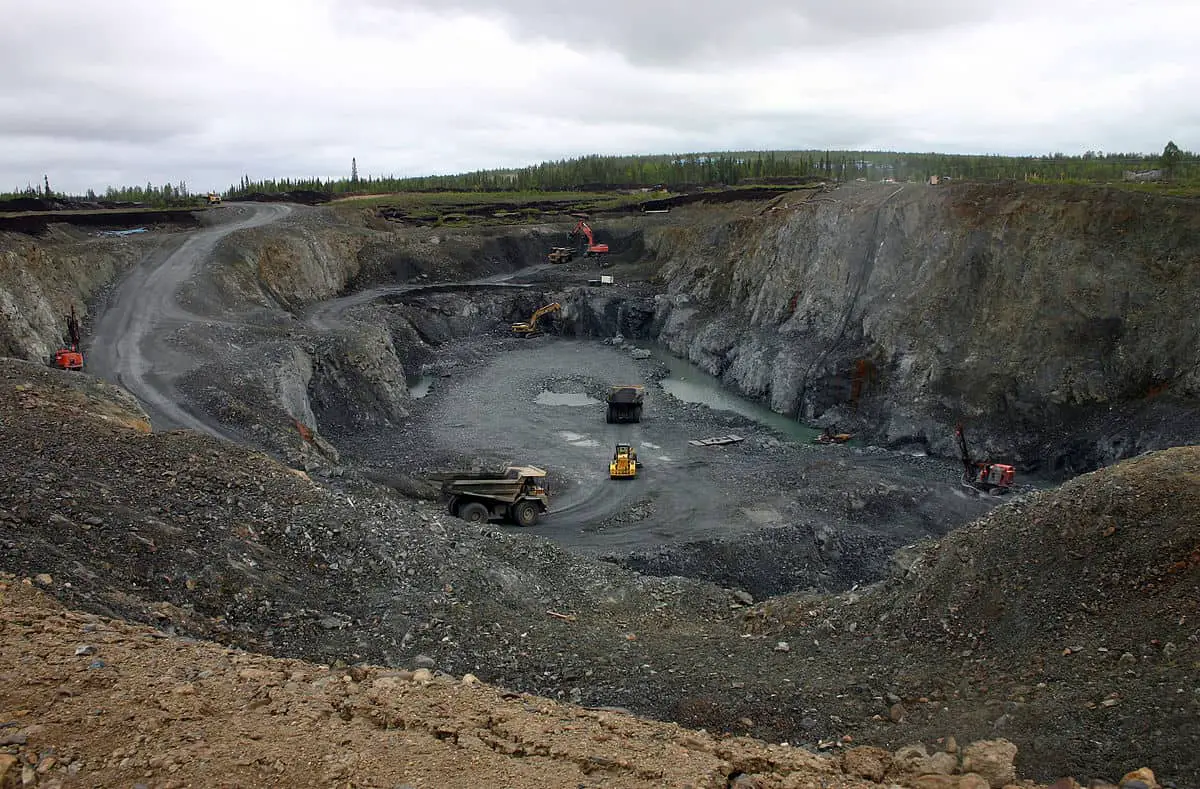Table of Contents
Open pit mining is one of mankind’s greatest achievements in the ongoing search for precious ores such as copper, silver, iron, and gold. It describes the process of systematically excavating land and digging out the rocks and minerals in search of metallic ores and removing them via borrow or open pit.
*This post may contain affiliate links. As an Amazon Associate we earn from qualifying purchases.
The open pit mining method (also known as opencast, open-cut, or strip mining) is not extractive; meaning that most of the time there no need to tunnel directly into the earth. Rather, it is a technique used when rocks and/or ore are discovered near the surface.
Due to a thinner layer or covering of sand, gravel or cinder, these mineral-rich areas produce rich mineral resources. When miners locate valuable minerals in hard rock veins below the surface covered by a thick or extra-heavy overburden, they may then resort to underground mining routines.
Open pit mining results in waste products collected from all sides and the bottom of a pit which leaves a huge canyon-like hole. These “quarries” are open pit mines that produce dimension stone and materials used in buildings and construction.
Mining usually continues until they have realized all available mineral resources. Until that time, however, open pit mines are made larger than necessary. Their enormous size makes them suitable locations for landfills.
In most cases, water control is important to prevent the mine pit from turning into a lake. The mine becomes vulnerable if it is located in an area susceptible to heavy rainfall and/or large amounts of precipitation. Open pit mining is an operation that relies on digging an open pit as an effective way of accessing the desired ores and materials.
It is a method of mining the Earth’s surface to extract minerals and various substances that exist close to the mining site’s surface. To see some popular mining kits that you can try for yourself just click here.
Benefits of Open Pit Mining
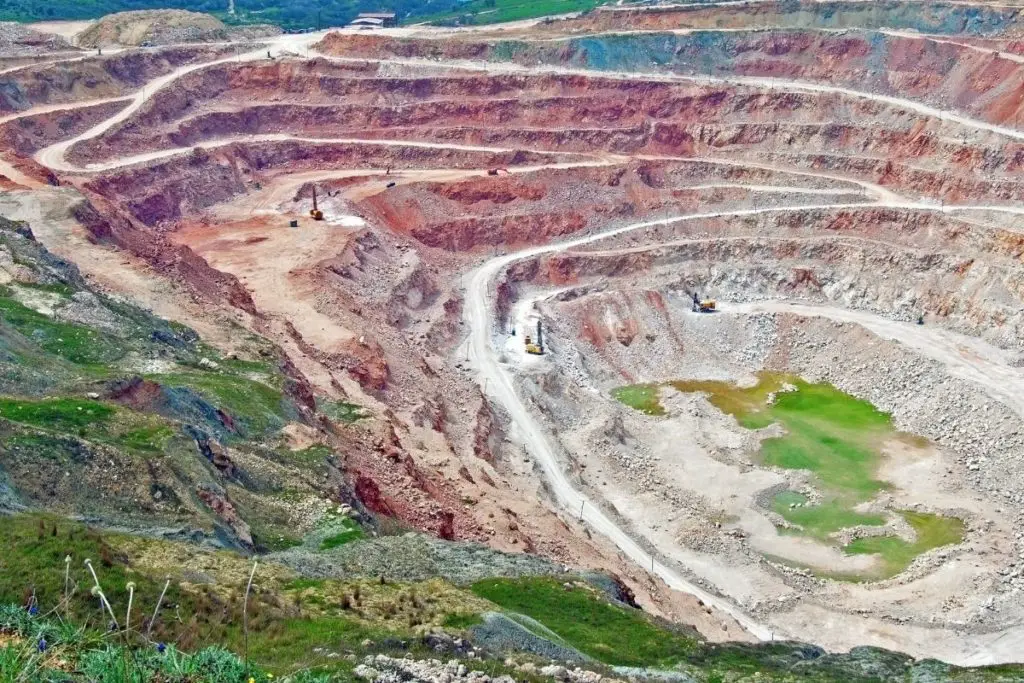
Open pit mining (also known as strip mining) is the process of extracting ore, minerals and/or fossil fuels that occurs on the surface of a particular mining site. When considering all the mining operations in the world, at least 40 percent of mining takes place at the surface reports Greenpeace International.
When compared to underground mining methods, open pit surface mining is considerably more efficient.
1. Increased Efficiency
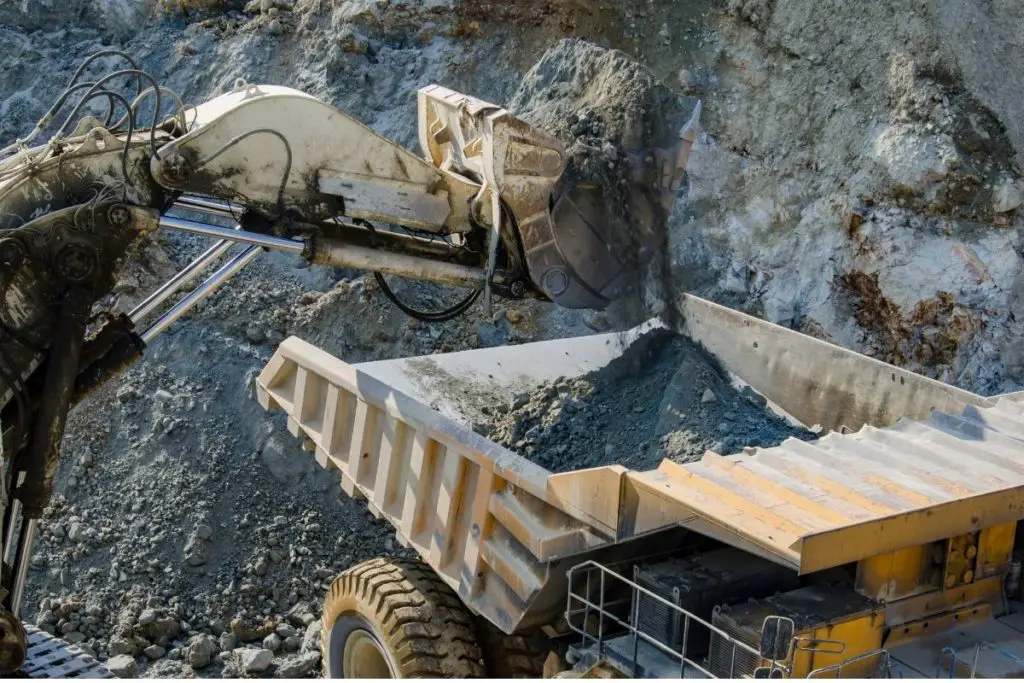
One of the biggest benefits open pit mining produces is the growth in the overall efficiency when compared to deep-shaft mining methods. Mining occurs on the surface, so there aren’t any space restrictions arising from narrow tunnels and shafts. Thus, the extraction rate is unaffected producing more ore at a faster rate.
Also, sampling each “bench” or level within an open pit is easier when making the determination whether to mine deeper. Surveyors can quickly analyze the ore’s potential and yield avoiding injuries and safety hazards.
Mining companies realize increased quantities of organic and inorganic materials when using open pit mining techniques due to the large extraction vehicle size which increases the amount of ore harvested per day. The bottom-line shows increased efficiency and reduced operating costs when mining the open pit method.
2. Safer Mining Statistics
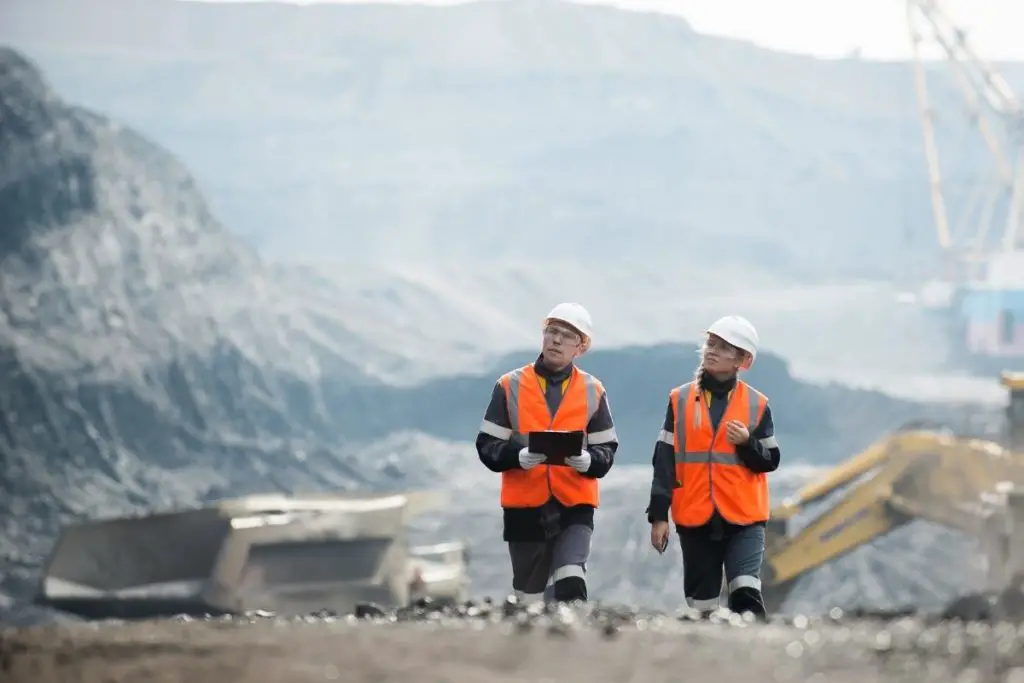
The numbers are impressive. Stats show that open pit mining is proven safer than shaft mining. Anytime you engage in underground mining; there’s always a risk. Whether it’s a cave-in or toxic gas release, people can die or suffer terrible injuries.
There was a time when the most common way to extract ore was shaft mining resulting in thousands of deaths. Cave-ins, noxious fumes, gas events and accidental traumas related to equipment were on the rise. Over 3200 people died in 1907 due to mining incidents. Today, the following changes have drastically influenced the mining business, making it a much safer occupation:
- Open-pit mining
- Safer equipment
- Increased safety awareness
The Positive Points
The mining company’s typically store collected waste materials (waste rock or overburden) close to the open pit. When the layer parallel to the soil’s crust is revealed (the ore horizon), several benches (steps) are cut into it making waste removal easier.
Depending on the mine’s size, there could be one or more roads cut into the sides which are great for navigating the gigantic earth/ore haulers.
Sometimes, pumps are necessary for getting rid of water in the pit so, the extra room for crews and vehicles facilitates smoother and faster results. Open pit mining remains the preferred method for surface mining offering better ventilation, increased mineral production and larger profits.
How to Open Pit Mine?
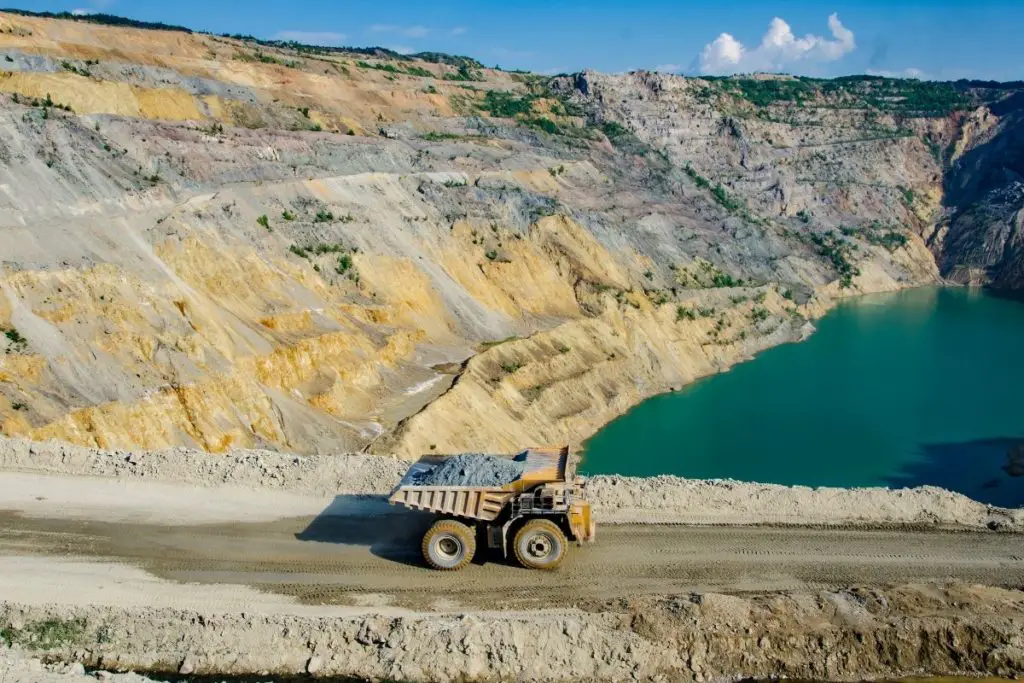
The correct way to mine using open pit techniques starts and ends with thorough planning. Your mission involves exposing and mining valuable minerals and ore. This means it is necessary to excavate and move large amounts of waste rock. The focus is to gather the mineral deposits while being cost effective.
Carefully consider and select physical design parameters and schedule the ore extraction and waste relocation so that vehicles and drivers are available for each. Extraction programs require meticulous planning as they are complex.
The scheduling demands you make decisions that might cost the company huge sums of money.
Engineering know-how and experience is the key to a successful open pit mining operation. It is a daily lesson in economics, geology, and mining engineering criteria. A bench, for example, is a ledge forming an individual level of operation.
Miners send the mineral and/or waste materials collected back to the bench’s face where the mineral or waste awaits relocation in successive layers, each of which is a bench. It takes planning and scheduling to operate the many benches simultaneously; all in different locations and elevations throughout the mine.
Open pit mining is an efficient, cost-effective way to mine for minerals, ore, and coal. It is a reliable and much safer way to do “hard rock” mining for metal ores such as:
- Copper
- Gold
- Iron
- Aluminum
- Uranium and other various minerals
Conscientious planning must include environmental factors pertaining to protection and public relations which can negatively or positively impact the profit margin. It starts with the first day of exploration and progresses to encompass reclamation.
It is crucial that the planning include the prevention of design errors instead of correcting them later on.
This is critically important due to the cost of environmental protection and the effects bad press has on a mining operation. An experienced planner knows they must give careful consideration to the regulatory (legal) framework in mining affairs.
Proactive management avoids the high cost of compliance by taking the law into account when designing or planning to mine.
From the initial onset of the open pit mine design planning stage, the gathering of data and getting permits, addressing the impact of mining on the environment are of the utmost importance. Beginning with exploration, the core holes must be sealed, and the site reclaimed. The savvy planner knows of impacts such as:
- Aesthetics
- Noise
- Air quality (dust and pollutants)
- Vibration
- Water discharge and runoff
- Subsidence (the gradual caving in or sinking of an area of land)
Waste processing is a huge consideration requiring knowledge of the infrastructure underground and the surface. The planner must be familiar with the processing plant responsible for the minerals, roads needed for transport and mine access and any remote facilities, etc.
If the mining process causes any deterioration of either the surface or groundwater, they must be ready to implement both remedial and treatment measures that meet discharge standards.
The plan put in place to govern the mine’s operations must include every technical measure deemed necessary to handle all environmental problems that may arise from the initial data gathering to the mine closure including reclamation of the excavated or disturbed surface areas. Reclamation plans include:
- Drainage control
- Preservation of topsoil
- Segregation of waste material
- Erosion and sediment control
- Solid waste disposal
- Control of fugitive dust
- Regrading
- Restoration of waste and mined areas
- Effects of mine subsidence
- Vibration (induced by mining, processing, transport, or subsidence)
- Impact on surface water and groundwater
The viability of a mining operation and its economics are often dictated by the smart, effective planning and anticipation implemented by the mining company in the beginning.
Conclusion
At the heart of every responsible mining endeavor, there is the desire to leave the land in a healthy, environmentally sound state. At the conclusion of the mining project, the company restores the disturbed area. Land rehabilitation comprises stabilizing waste dumps by flattening them out.
If the ore contains sulfides, the mining company covers it with a layer of clay to prevent rain and oxygen from coming into contact with it which could oxidize the sulfides producing sulfuric acid; a phenomenon known as acid mine drainage.
The next step is to cover the area with soil and seed it with vegetation to help merge the materials. Eventually, erosion takes place. The process of leaching slows because of the soil cover’s ability to protect the environment. Thus, the land suffers no damage by the acid or heavy metals.
There aren’t any long-term studies or findings on the soil cover’s success because of the relatively short time that the large scale open pit mining has been in operation.
It could take hundreds of years for some areas where waste is to become “acid neutral” no longer contaminating the environment. Reputable mining company’s fence off certain areas preventing livestock from feeding off the restorative vegetation.
They then make the open pit inaccessible by surrounding it with a fence. In many areas, they have converted the land into recreational parks or even residential communities.

